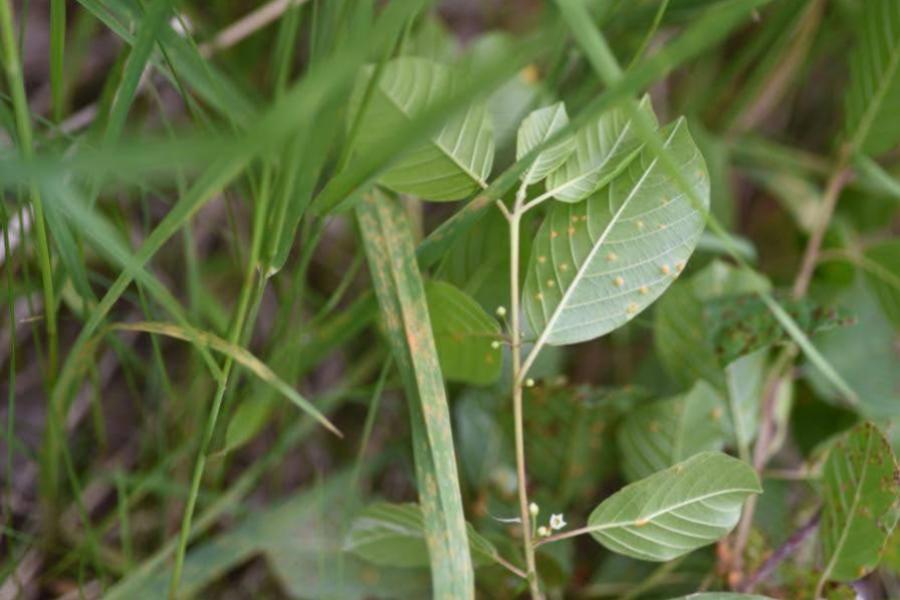March 5, 2024
Though some crown rust fungi are known to cause widespread damage to oat and barley crops, new research from the University of Minnesota suggests a close relative of these major pathogens could actually be a valuable asset in managing two troublesome wetland plants in Minnesota.

Findings recently published in Plant Disease show that Puccinia coronata var. coronata, or Pcc—a non-native rust fungus recently reported in North America—could be beneficial in managing glossy buckthorn (Frangula alnus) and reed canarygrass (Phalaris arundinacea).
“As this fungal pathogen affects two highly invasive species*, understanding its host range helps define strategies and predict its impact if used as an augmentative biocontrol agent,” said Pablo D. Olivera Firpo, a research associate professor in the Department of Plant Pathology.
The research was funded by the University’s Minnesota Invasive Terrestrial Plants and Pests Center, supported by the Minnesota Environment and Natural Resources Trust Fund as recommended by the Legislative-Citizen Commission on Minnesota Resources (LCCMR).
To assess the host range—which plants are susceptible to infection—the research team conducted extensive greenhouse trials. Over 1,800 samples of cereal crop species like wheat, oats, barley, and rye; 110 grass species; and 16 species in the ornamental shrub and buckthorn families were evaluated for their response to Pcc.
The researchers found:
- No cereal crops or turfgrasses were found to be susceptible to Pcc.
- In addition to reed canarygrass, 12 other grass species were found susceptible to Pcc—some native to Minnesota or North America, some highly weedy.
- Three native North American buckthorn species were also susceptible to the pathogen.
“It is highly valuable to predict what plants might be affected by a new pathogen and to understand the host ranges of rust fungi more broadly,” said Nick Greatens, a recent U of M doctoral graduate. “Fortunately, no important crops or turfgrasses are affected by Pcc. Locally, the pathogen has apparently positive effects, knocking back some highly weedy plant species. The benefit to an ecosystem will depend on the local plant community.”
Future work will quantify the effects on reed canarygrass and glossy buckthorn in greenhouse experiments. Efforts are ongoing to document the occurrence of various crown rust fungi on buckthorns and wild grasses across Minnesota.
*According to previous research, reed canarygrass (Phalaris arundinacea) populations in Minnesota are largely native, although the plant may form aggressive stands and require control.
Related content
Aecial and telial host specificity of Puccinia coronata var. coronata, a Eurasian crown rust fungus of two highly invasive wetland species in North America, research paper published in Plant Disease, 2024. A first-look version of the paper is available for free.
Biology and biocontrol potential of a rust fungus infecting Phalaris arundinacea and Frangula alnus, research project
Effects of Puccinia species complex on common buckthorn, research project
Biological control of buckthorn using fungi, research project